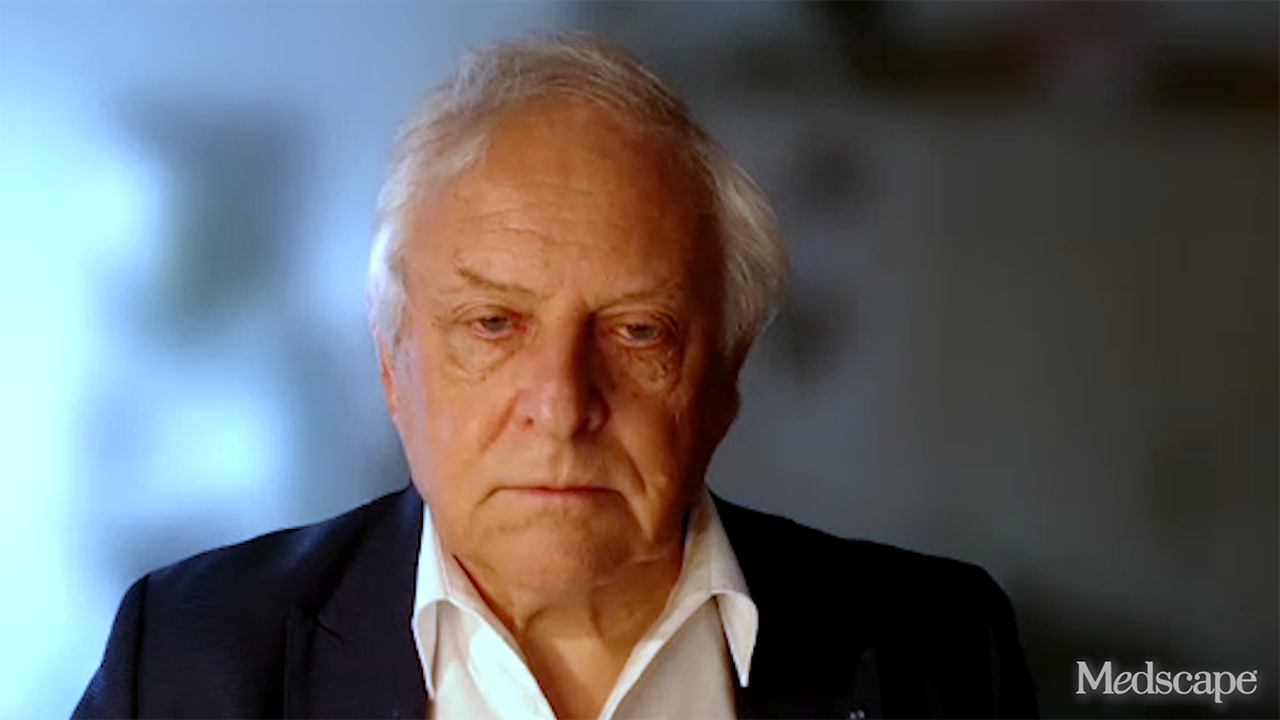Fitness
Top Studies From ESOC 2024 in Review

This transcript has been edited for clarity.
Dear colleagues, I’m Christoph Diener from the University Duisburg-Essen. In this month’s video, I would like to discuss eight studies that were presented at the European Stroke Organisation Congress in Switzerland last month.
Blood Pressure in Acute Stroke
I would like to start with this never-ending story of lowering increased blood pressure in acute stroke. Whenever someone has a stroke, blood pressure is increased. Stroke physicians, for the past 10 years, have been obsessed with the concept of lowering blood pressure in acute stroke.
The INTERACT4 study in The New England Journal of Medicine was done in China. This study had more than 2400 patients with elevated blood pressure who had a stroke. In this study, the blood pressure lowering or control was done on the way to the hospital. There was no surprise that there was no benefit.
In subgroup analysis, people with ischemic stroke had a worse outcome. Only those where, later on, a cerebral hemorrhage was diagnosed had a benefit. This doesn’t help, because with the exception of mobile stroke units, you don’t know whether a patient has ischemia or bleeding. Hopefully, this is finally the end of lowering blood pressure in acute ischemic stroke.
The next study is the TRUTH study, published in The Lancet Neurology. This study investigated the concept of whether it’s really necessary to lower blood pressure prior to thrombolysis if the blood pressure is above 185/110 mm Hg. This was a cluster randomized trial in the Netherlands in patients with acute ischemic stroke and elevated blood pressure.
In half of them, the blood pressure was lowered; in the other patients, they waited until the blood pressure came down and then performed thrombolysis. In this study with 853 patients, there was no benefit of lowering blood pressure and no increased risk of waiting in terms of bleeding complications.
Finally, after 15 years, we have now, again, shown no benefit to lower increased blood pressure except for hypertensive crisis in people with ischemic stroke.
Thrombolysis and Thrombectomy
The TEMPO-2 study, published in The Lancet, investigated thrombolysis with tenecteplase in people with a mild ischemic stroke, defined as NIHSS 0 to 5, and evidence of intracranial occlusion. This study had 886 patients and was terminated prematurely due to futility. There was no difference in functional outcome because there was an increased risk for mortality and intracerebral bleeding with tenecteplase.
This means we now have two kinds of studies: ones with alteplase and the other ones with tenecteplase, which clearly indicate that it doesn’t make sense to perform thrombolysis in mild ischemic stroke.
The next study is the LASTE trial in The New England Journal of Medicine. This study investigated thrombectomy in large strokes. We have clear benefit that thrombectomy is highly effective in moderately sized ischemic strokes, but this study included people with ASPECTS 0 to 5, which are large strokes.
The study had 333 patients. There was clear benefit of thrombectomy in these large strokes. Now we have altogether four trials which showed a benefit of thrombectomy in large ischemic strokes.
Antiplatelets and Anticoagulants
Let’s move to early secondary prevention. The ATAMIS study, published in JAMA Neurology, investigated the combination of clopidogrel and aspirin vs aspirin in people with moderate to severe strokes. We already have clear evidence that this is beneficial in people with high-risk TIA and mild strokes. The study had 3000 patients.
The primary endpoint was clinical worsening within the first 7 days. There was a clear benefit of combination therapy vs aspirin monotherapy, and no increased risk of bleeding for a treatment period of about 10 days. This means that dual antiplatelet therapy is now established for the whole range of high-risk TIAs up to moderate to severe strokes.
The next study deals with intracerebral bleeding. This was the ANNEXA-I study in The New England Journal of Medicine. This study recruited patients who were treated with factor Xa inhibitors, mostly for atrial fibrillation, and had an intracerebral bleed. They were randomized either to andexanet alfa, which is an antidote to factor Xa inhibitors, or standard of care, which usually was prothrombin complex.
The primary endpoint was quite complicated. It was hemostatic efficiency, defined by less than 33% increase in the volume of the bleeding and no worsening of the National Institutes of Health Stroke Scale (NIHSS) of more than 7 points, and no rescue therapy. There were 260 patients in each group, and there was clearly a benefit of andexanet alfa compared with standard of care. There were more thrombotic events on andexanet alfa, with 27 vs 15. This study shows that there is a clear benefit of andexanet alfa in these patients, but there is also a slight increase in thrombotic events.
Tranexamic Acid and Hemicraniectomy in ICH
Another study with cerebral hemorrhage is the STOP-MSU study, published in The Lancet Neurology. Previous studies showed no benefit of tranexamic acid in people with intracerebral hemorrhage. This study is different because it investigated tranexamic acid in the first 2 hours after symptom onset. There were 202 patients and, unfortunately, no difference in increase in bleeding volume or clinical outcome.
The last study is the SWITCH study, published in The Lancet. Previous studies showed little benefit of decompressive hemicraniectomy for cerebral hemorrhage, including lobar hemorrhages. This study in Europe investigated decompressive hemicraniectomy vs conservative treatment in people with large basal ganglia hemorrhages. There were 200 patients and a small benefit was observed. The clear downside is a high number of patients with permanent severe neurologic deficits and disability.
Again, this means that the physicians have to discuss very carefully with the relatives of a patient or the patient (if the patient is not aphasic) whether this procedure should really be done.
Dear colleagues, exciting results from the European Stroke Organisation Congress 2024 in Switzerland. I’m Christoph Diener from the medical faculty of the University Duisburg-Essen in Germany. Thank you very much for watching and listening.










